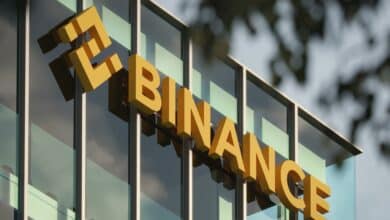Top Methods and Tools to Analyze Crypto Data

Introduction
Cryptocurrencies are the latest fad in investment and financial circles. Anyone who is planning to make their money work for them has plans to invest in one or other type of cryptocurrency. However, considering the massive amount of cryptocurrencies in the sector, putting money into one particular coin or token can seem like a gamble.
Rather than picking cryptocurrencies randomly, it is best to learn some of the basic techniques that experienced investors use to measure market activity. One look at charts and strings of data can seem scary and confusing but with a little preparation and knowledge, anyone can learn to read them to make informed and sound investment decisions.
What is Crypto Analysis?
Cryptocurrencies are the product of blockchains that are meant to be used as money or investment options. Just like stocks and bonds, investors use data like price history, supply, market sentiment, and other important measures to learn more about a particular cryptocurrency.
All of these sets of numbers and charts that represent information about a crypto coin or token are crypto analytical data.
Types of Crypto Analysis
Professional stock brokers use data metrics like price-to-book ratio or earning-per-share to measure the value of a stock that they want to invest in.
In the same manner, cryptocurrency investors also use different types of data projections to study the underlying value and future price projections for a given coin or token. The basic types of crypto analytical data can be divided into the following:
- On-Chain Data
- Technical and Fundamental Analysis
- Market Sentiment Projections
- Financial Market Metrics
On-Chain Data
On-Chain data is the information about the behavior of the cryptocurrencies that are issued by their native blockchain. This type of data is often free from the possibility of manipulation and allows the investors to read the underlying performance of the crypto coins.
Instead of outsourcing the data from an external source, it is possible to extract the data on your own.
The investors can run a node on the blockchain to export their desired data. However, extracting data on your own can be an expensive and time-consuming process. Most investors opt for getting their on-chain metric from websites and APIs that are created for specified blockchains.
Technical and Fundamental Analysis
Crypto influencers and financial market experts use the term fundamental several times referring to the cryptocurrency performance on social media. Fundamentals are the most basic type of technical data projections. A Fundamental Analysis or FA is a way of cryptocurrency analysis that measures the intrinsic value of a cryptocurrency.
The FA makes use of internal and external factors to find out if the cryptocurrency under question is under or overvalued.
With this type of information, the investors can plan to sell or purchase the digital currency they have been studying. In contrast to the tools for traditional market analysis, FA is suitable for decentralized cryptocurrencies that are closer to trade commodities like gold.
Market Sentiment Projections
Just like any other financial investment option, the confidence of the investors in a particular cryptocurrency is also a very important factor in its success.
Therefore, digital currency investors make a point of gathering information about the general sentiment towards a cryptocurrency in the market and use that to determine their investment positions.
Meme coins like Doge and Shiba Inu have been able to become the biggest market gainers in a short amount of time on account of the traction around them.
However, after some time when the market activity went down, many investors ended up losing their profits. It is a great idea to use tools like LunarCrush which collects the social interaction data of about 3,500 cryptocurrencies from social media platforms, exchange platforms, and networks in real-time.
Financial Market Metrics
The traditional financial investors who started to take an interest in the cryptocurrency market also use some of the analytical apparatuses in their crypto portfolios.
At their base, there are many cryptocurrencies like Bitcoin, Ethereum, ADA, BNB, and others that are used as an investment option rather than an alternative for paperback.
Financial Market metrics are an effective way to gauge some aspects of these crypto investment options that are influenced by economic conditions and underlying protocols of the blockchain. The financial market metrics that can be useful for cryptocurrency analysis are classified as under:
- Supply and Demand
- Trading Volume
- Market Capitalization
- Liquidity
Supply and Demand
The fundamental forces of supply and demand also shed a visible impact on the market value of cryptocurrencies. When the supply of a cryptocurrency increased too much in the market it can mean that the demand is decreasing which can decline the price of the digital currency and vice versa.
However, there are some advanced supply measurement models like Stock-to-flow or S2F that are used to measure the ratio of new supply in comparison to the existing supply of a currency like Bitcoin.
There are some other metrics like Maximum Supply which tells the total quantity of a token and Circulating Supply which informs the investors about the number of coins currently trading in the market.
Trading Volume
The trading volume of a cryptocurrency refers to the number of active users that are showing interest in a particular token.
Traditionally, during a bull market, the trading volumes for a cryptocurrency are higher indicating more demand while during a bear market the trading activity slows down. Trading volume is also used to measure the amount of liquidity available for digital currency.
Market Capitalization
The market capital of a cryptocurrency is the total value of a blockchain-based on per unit coin price and aggregate quantity in circulation. Market Capitalization is a controversial measure that can be used to manipulate the interest of new investors by showcasing big numbers.
On the other hand, a big Market Capitalization number can improve the impression or sentiment around a cryptocurrency suggesting that it has a better chance to grow in comparison to smaller market cap currencies.
Liquidity
Liquidity is referred to the speed of sale and purchase of an asset based on its availability in the market. In simpler words, a cryptocurrency is considered liquid when investors can easily sell them or purchase them at any given time without facing a blockade in the marketplace. Investors tend to stay away from cryptocurrencies that they cannot sell or purchase easily at their discretion.
To measure liquidity, it is best to look at the number of asks and bids that are sell and purchase orders by interested traders. In case, a cryptocurrency does not have enough liquidity, the investor would have to lower their ask to sell it as soon as possible which can put them at greater risk for losses.
Steps of Cryptocurrency Analysis
For a new investor, it can seem like professional traders are always playing with numbers and adjusting complex graphs to make better cryptocurrency market projections.
However, a truly digital currency trader understands that the process of crypto analysis starts well in advance than technical analysis. Here is a basic breakdown for cryptocurrency data analysis that will provide the new investors with a step-by-step progression.
- Primary Analysis
- Secondary Analysis
- Tertiary Analysis
Primary Analysis
The primary analysis starts before the complex reading of graphs and pie charts. The first step for a cryptocurrency investor is to pick the top candidates for their digital currency portfolio. As per the data projections from CoinMarketCap, there are currently more than 18,000 digital currency variants in the world and not all of the crypto projects are reliable.
In the primary phase of the cryptocurrency investment, a trader has to inspect the outermost information about it. Many scammers take advantage of the new investors who lack the knowledge to conduct an audit of a cryptocurrency project. To examine a cryptocurrency project here are a few useful tips:
- Whitepaper
- Core developers and Validators
- Social media presence
- Legal Barriers
- Utility of Token
- Peers or Communities
- Communication/ Feedback
Whitepaper
A Whitepaper is a detailed technical brief about a blockchain project that is published by the founder or a core creator. Bitcoin is an open-sourced blockchain network that was introduced by Satoshi Nakamoto who also published the Whitepaper setting a trend for all its successors. By reading the Whitepaper, the investor can determine if the project has technical clarity and objective directive at its base. A scammer is unlikely to take the time and effort to pen down a well-planned and exceptionable Whitepaper.
Core Developers and Validators
Due to the feasibility of the technology, it is easy for just about anyone with basic computer knowledge to issue a cryptocurrency. There have been many cases, where social media influencers created or promoted tokens that they did not understand and created massive losses for themselves and their followers. Therefore, it is a good idea to dig into the details about the people who are introducing a cryptocurrency to you as creators, promoters, or validators.
Social Media Presence
A Strong social media presence is an indicator of a growing and thriving cryptocurrency community. However, investors should beware that it is also easy to purchase followers and create fake accounts to falsely represent the popularity of a cryptocurrency. The more practical approach for the social media presence of a cryptocurrency is to look for the core developers and the customer services response. If the developers and validators are actively sharing updates about their crypto project on social media it is generally a positive sign.
Legal Barriers
Imagine a cryptocurrency project that fulfills all the above criteria and you make a sizeable purchase. However, the government officials in your country have been at odds with the management of that cryptocurrency and they eventually decide to ban it in your country.
Under such circumstances, your investment portfolio can suffer from losses. Sometimes, blockchains organize ICO or Initial Coin offering events to promote their currencies but they are barred from some countries. It is best to collect all the legal details regarding crypto and financial regulations in your region to prevent such incidents.
Utility of Token
Many cryptocurrencies do not offer any real use for their investor and only get price hikes based on speculation around them. The tokens without any real utility or function are called shit coins. The investor needs to make sure that the digital coin they are purchasing has a real use or that it offers a solution to a real problem. The shit coins issuers try to pump the price of these tokens using gimmicks and cash out their massive reserves eventually leaving the investors devastated behind them.
Peers and Communities
Every legitimate cryptocurrency community has a dedicated local community where all investors and stakeholders can connect. Some blockchain projects have generated such communities on their official websites. While, it is also possible for people to join crypto communities on social media platforms like Facebook, Twitter, Reddit, and others.
Communities allow the investor to collect real-time information and remain in the loop with all the latest developments in their circle. Furthermore, it can also act as a support group for the investors who are trying to make sense of their crypto portfolios.
Communication/feedback
Communication is the key that can make or break the trust of the cryptocurrency project. It is always a great idea to invest in a cryptocurrency project that offers plenty of online support and feedback about its user experiences. In the absence of active communication channels between the network managers and the cryptocurrency traders, the confidence towards the crypto asset can shake which can reflect badly on its price.
Secondary Analysis
The secondary analysis phase can start only once the external aspects have been audited and verified. The second layer of cryptocurrency analysis is the one that is concerned with the technical analysis of the cryptocurrency token or coin itself. Here are some of the most important technical indicators that can assist the investors to get started with the crypto assessment:
- Dow Theory and its tenets
- Candlestick charts
- Support and Resistance
- Moving Averages
- Miscellaneous indicators
Dow Theory and its Tenets
Charles Dow is the founder of the Wall Street Journal and Dow Jones index. He laid the foundation of technical analysis of the stock market and created the first-ever stock index known as Dow Jones Transportation Index or DJT and Dow Jones Industrial Average DJIA. His mathematical approach and market psychoanalysis were compiled from WSJ publication after his death under the name of Dow Theory. Here are the six main tenets of Dow Theory that are also used to analyze the crypto market:
- The first tenet suggests that the price of an asset in the market provides all necessary information that is essential for its technical analysis. It is expressed in the form of the Efficient Market Hypothesis EMH.
- The second tenet postulate that there are 3 trends in an investment market namely Primary, Secondary, and Tertiary. Primary trends can be classified as bull or bear markets. Meanwhile, secondary trends work in inverse proportion to primary trends. Meanwhile, the Tertiary tends to last for a shorter period typically one or two weeks.
- The third tenet defines three phases of Primary trend that are bullish primary, bearish primary, and excess phase.
- The fourth tenet explains that a new trend in the market can only be confirmed if two or more indices correlate with each other.
- The fifth tenet advises that trading volume increases when the asset under question is moving back to its primary trend and vice versa.
- The sixth tenet recommends that reversals of primary trends are often confused with secondary reversals. Therefore, an existing trend does not consolidate until a reversal is visible and clear.
Candlestick Charts
Candlesticks are ticker colored in red or green that tracks the increase or decrease of the market value of an asset class.
Each candle is made from a wick and a body where the body indicates the opening and closing prices and the wick reveals the highest and lowest price point in that particular time frame. Candlestick charts are great for assessing cryptocurrencies in the context of a time frame.
Support and Resistance
Support levels are stops for the price point of a cryptocurrency during a negative correction. Meanwhile, resistance levels are resistance tolls where the price of a cryptocurrency is expected to stabilize for a while before moving upwards.
Moving Averages
A moving average is a mean price of a cryptocurrency for several time frames during one big chunk of the period.
Moving averages are great for determining the performance of a cryptocurrency in real-time trading. The most common MAs ranges are 10, 20, 50, 100, and sometimes 200-day periods. The most common types of MAs are Simple Moving Average, Weighted Moving Average, and Exponential Moving Average.
On-Balance Volume Indicator
OBV is used to measure the trading volume of a cryptocurrency that rises and falls during a specified period. Typically, OBV rises alongside increasing prices and it is a great way to confirm a bullish or bearish reversal. There are 3 ways to measure OBV:
- Moving Average Convergence Divergence: MACD is used to find the difference between 12 and 26-day EMA values. If 12-day EMA is lower than the 26-day EMA it sounds like a buying signal and if the values are reversed it indicates a sell signal.
- Relative Strength Index: RSI is used to determine if an asset is oversold or overbought. The range of RSA is set from 0 to 100. During 14 days, if RSI is below 30 it means that the asset is overbought, on the other hand, if it goes above 70 it means that the asset is oversold.
- Bollinger Bands: Bollinger Bands are used for short-term price projections. Usually, Bollinger Band analysts use a 20-day MV and add or subtract standard deviations from the value. Bollinger Band findings should be paired with other indicators. When the market value of a cryptocurrency moves above the upper band it is overbought and when it moves below the lower band it is considered oversold.
Tertiary Analysis
The Tertiary analysis is concerned with conducting detailed research on cryptocurrency platforms like dApps, DAOs, staking pools, exchange markets, digital wallets, swaps, DeFi markets, browser extensions, and any other platform that you use to store, trade, or stake your cryptocurrencies.
Conclusion
The cryptocurrency market is much more complex than gambling. Investors who are trying to make logical decisions for creating their cryptocurrency portfolio can use the above information to get started.
There are many cryptocurrency analytics services providers like Glassnode, Santiment, Messari, CoinMarketCap, and TradingView among others who specialize in crypto analytics and also provide access to basic and premium research tools to assist the digital currency investors.
Tokenhell produces content exposure for over 5,000 crypto companies and you can be one of them too! Contact at info@tokenhell.com if you have any questions. Cryptocurrencies are highly volatile, conduct your own research before making any investment decisions. Some of the posts on this website are guest posts or paid posts that are not written by Tokenhell authors (namely Crypto Cable , Sponsored Articles and Press Release content) and the views expressed in these types of posts do not reflect the views of this website. Tokenhell is not responsible for the content, accuracy, quality, advertising, products or any other content or banners (ad space) posted on the site. Read full terms and conditions / disclaimer.







